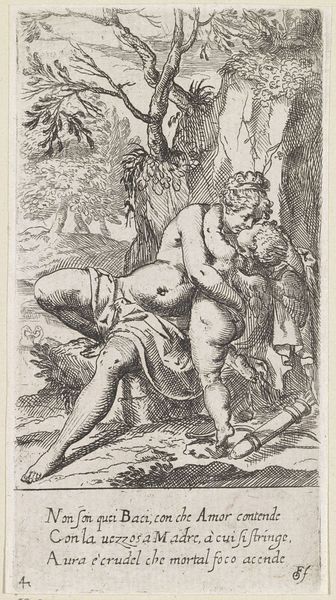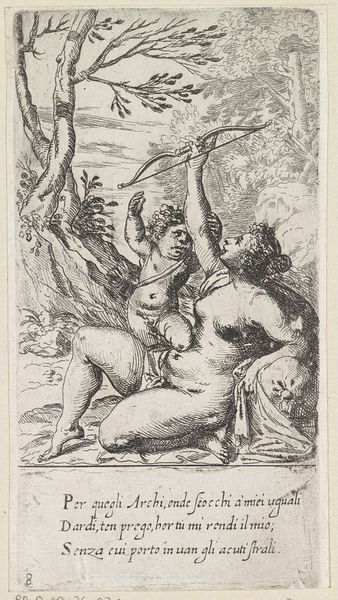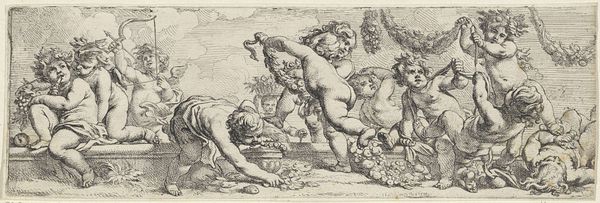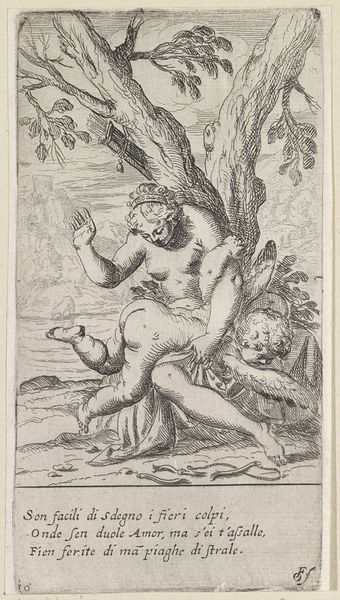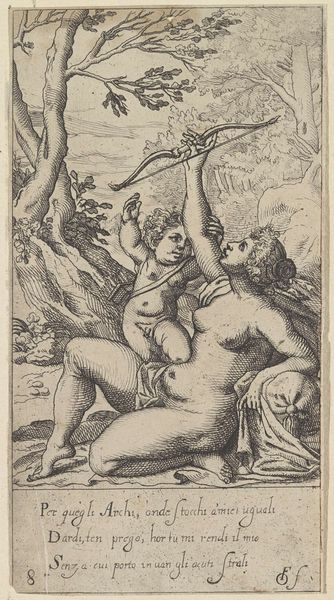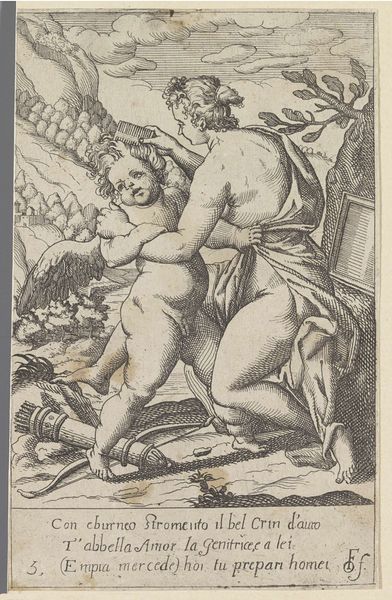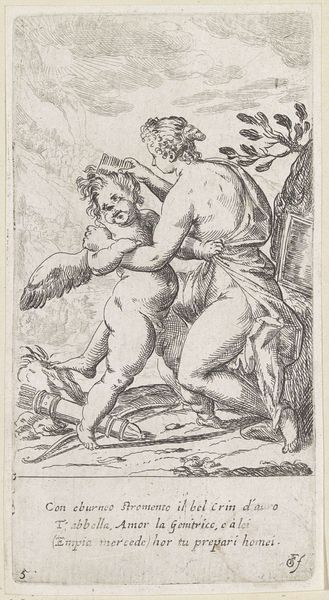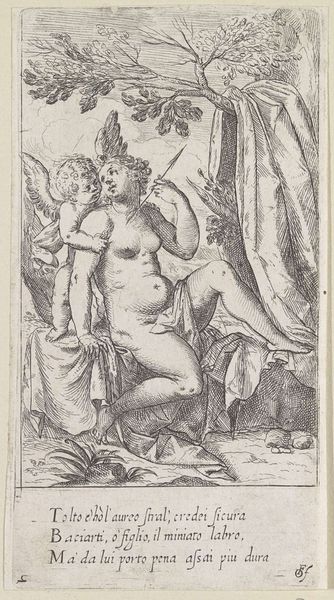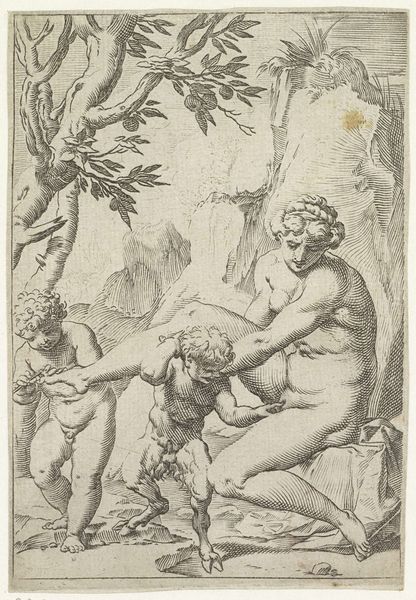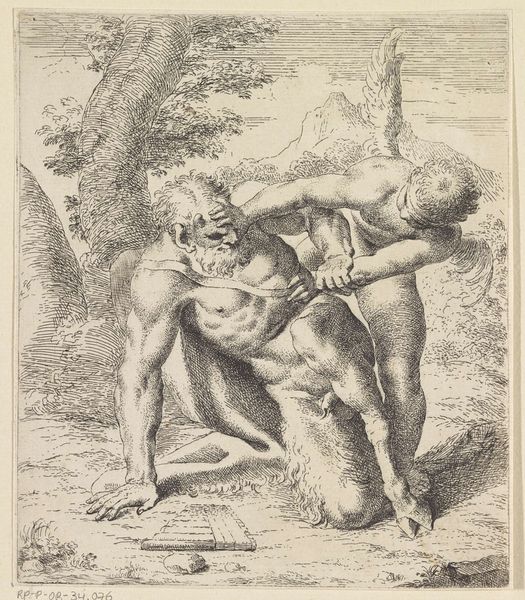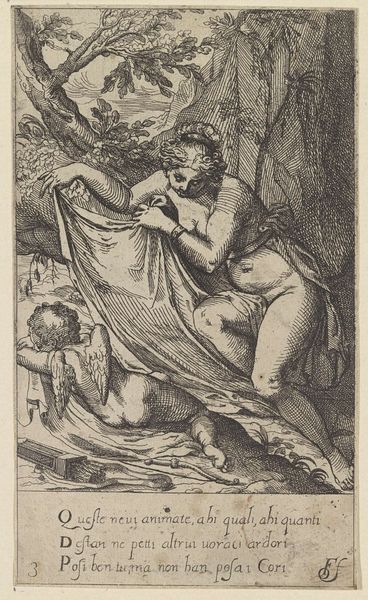
drawing, ink, engraving
#
drawing
#
allegory
#
pen drawing
#
mannerism
#
ink
#
nude
#
engraving
#
erotic-art
Dimensions: height 149 mm, width 91 mm
Copyright: Rijks Museum: Open Domain
Curator: This image, simply titled "Venus Kust Amor," dates back to the period after 1617. Created by an anonymous hand, this engraving on paper currently resides within the Rijksmuseum collection. What’s your first take? Editor: Intimate, but slightly…strained? The embrace feels less tender and more like a power dynamic is at play. And that Mannerist style! Everyone's a little too elongated and elegant. Curator: It’s a compelling piece for examining erotic themes and the pervasive allegories of the period. Venus and Cupid locked in a kiss… Yet the text at the bottom complicates the interpretation, suggesting perhaps, less affection and more "mortal foco"— deadly fire. Editor: Ah, yes! Let's look closer at this cultural moment: 17th century society viewed such imagery with distinct socio-political lens. Erotic art, though often subtly veiled in mythological context, played into ideas about power, social control and the visual representation of societal ideals or aspirations. Curator: Precisely. Cupid is vulnerable in Venus’ grasp. The image certainly utilizes nudity, typical for such renderings of classical subjects. However, it is that very combination that speaks to a continuity in our visual vocabulary - exploring the psychological undercurrents between mother and child or dominance versus dependence. Editor: Do you see any evidence to this political climate within its lines? Does this reveal a particular statement for their society's norms? Curator: Consider how images like these, circulated through prints, subtly shaped perceptions of authority. The artist employs allegory—Venus embodies ideals, amor/Cupid emotions—implying forces govern our behaviours. It's an ideology. Editor: What truly marks the work’s longevity and continuous hold on popular imagination are not only the symbolic roles Venus and Cupid assume as visual prompts, but how cultural interpretations surrounding the work vary over time in keeping pace with the ever changing role for public imagery! Curator: You are right, from the artistic mastery of the engraver to the socio-cultural context and beyond, we gain insight not only into artistic norms from ages past, but human emotional patterns and psychological depth we have been consistently grappling with across cultures and through time. Editor: A visual embodiment that persists and changes throughout our human tale. Very enlightening.
Comments
No comments
Be the first to comment and join the conversation on the ultimate creative platform.
